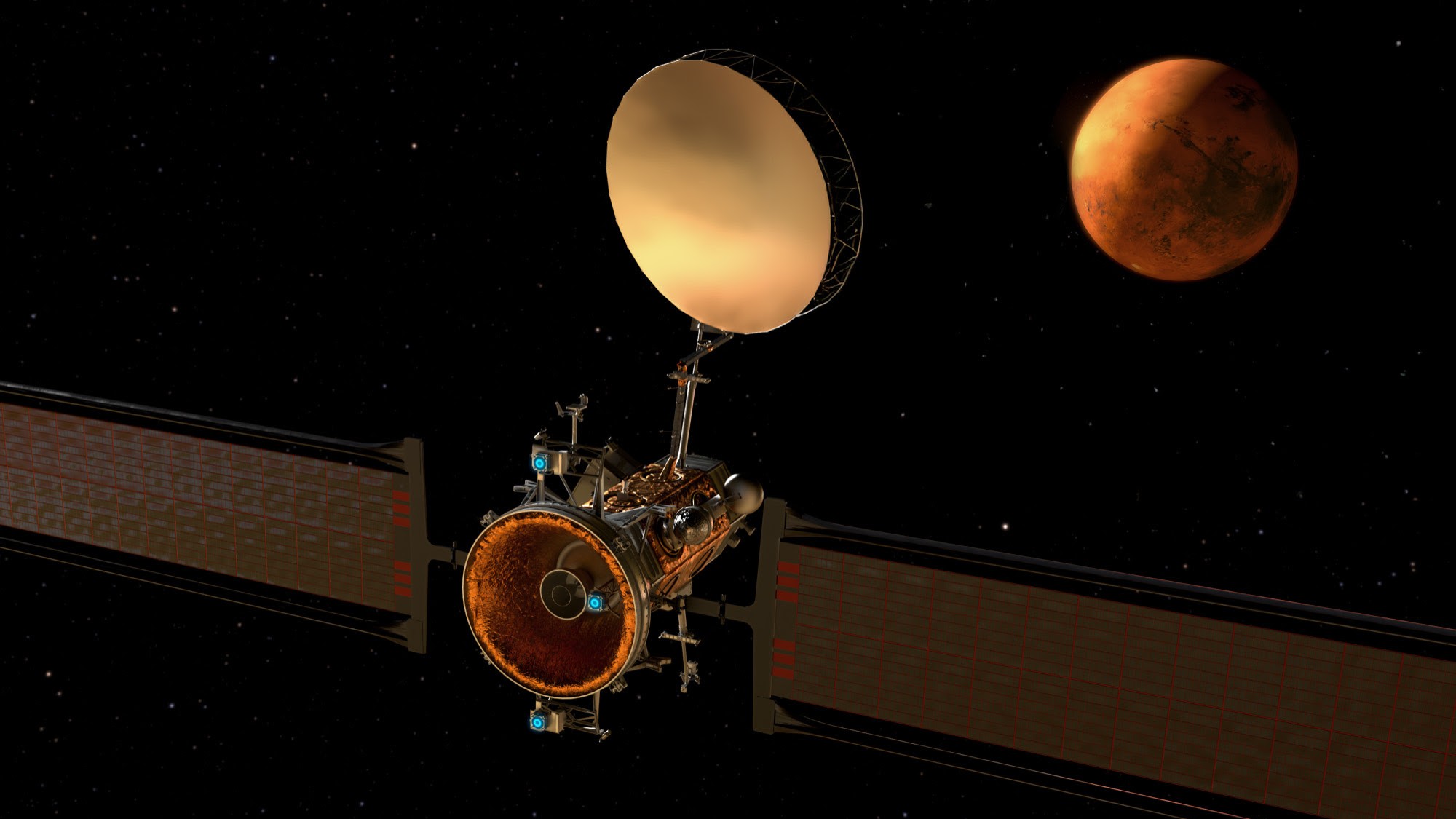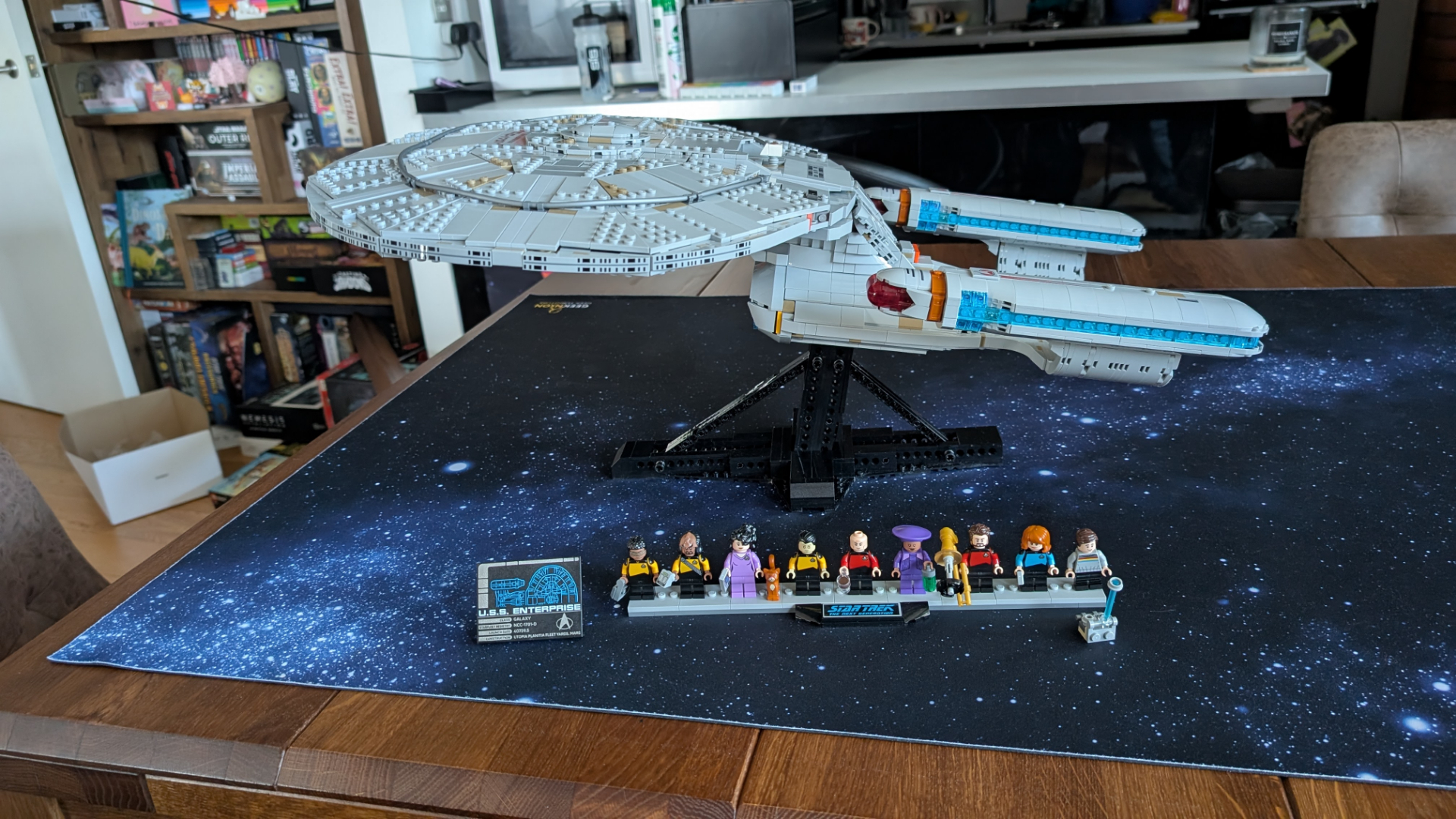Blue Origin pitches new 'Mars Telecommunications Orbiter' for Red Planet missions (video)
Blue Origin hopes the spacecraft will lift off in 2028.
Blue Origin wants to support NASA's Mars plans during the 2028 planetary alignment launch window.
The company has announced plans for a Mars Telecommunications Orbiter (MTO), a new spacecraft designed to establish a multi-relay hub for continuous communications between Earth and Mars.
The MTO, which Blue Origin says could lift off by 2028, is designed to deliver much higher bandwidth to Red Planet spacecraft. It could aid robotic missions on the Martian surface and in orbit, as well as future human exploration of the Red Planet, according to the company.

NASA's long-term Mars plans — including sample return and eventual crewed missions — will require robust relay infrastructure to maintain pace with the agency's aging Martian fleet.
Currently, most data from Mars is communicated through orbiters such as NASA's Mars Reconnaissance Orbiter (MRO), MAVEN (Mars Atmosphere and Volatile Evolution) and the European Space Agency's (ESA) Trace Gas Orbiter. When these spacecraft are eventually powered down, whether due to hardware degradation, mission reprioritization, or budgetary decisions, Mars assets will be left without a reliable communications network. MTO is pitched as a potential commercial option to fill that gap.
MTO will operate several "steerable high-rate links supported by a broad beam that offers wide-area coverage," Blue Origin said in a statement. The spacecraft will also augment its abilities through deployable ultrahigh frequency (UHF) relay satellites in low Mars orbit for "legacy assets and future entry, descent and landing demonstrations," the company added.
The spacecraft is built on Blue Origin's Blue Ring modular satellite bus — an advanced orbiter with independent processing, storage and A.I. capabilities, and the ability to support over a dozen payloads across multiple ports. MTO will operate using a hybrid thruster system, harnessing electric and chemical propulsion to expand its maneuvering capabilities and mission longevity, according to Blue Origin.
Breaking space news, the latest updates on rocket launches, skywatching events and more!
Meet Blue Origin's Mars Telecommunications Orbiter (MTO), a high-performance spacecraft built upon our existing and affordable Blue Ring platform that is ready to support NASA’s Mars mission in 2028. The orbiter builds upon Blue Origin’s Mars Next-Generation Relay and Mars Sample… pic.twitter.com/cvlt3PNqMAAugust 12, 2025
"Our orbiter's hybrid propulsion, maneuvering capability, and capacity greatly expand the windows to get to the Red Planet," Blue Origin said in a post on X.
The orbiter's design also incorporates technologies from the company's Mars Next-Generation Relay concept and Mars Sample Return (MSR) proposals for commercial options for NASA's communication infrastructure.
MSR is the agency's plan to haul home to Earth material gathered on the Red Planet by the Perseverance rover. NASA has been aiming to launch key MSR hardware in 2028, but that plan is in serious doubt due to delays and budget concerns. (Mars and Earth align for interplanetary launches just once every 26 months. The next two such windows come in 2026 and 2028).
NASA has not announced a contract award for MTO, and the spacecraft remains a proposal within Blue Origin's portfolio of planetary mission spacecraft concepts.

Josh Dinner is the Staff Writer for Spaceflight at Space.com. He is a writer and photographer with a passion for science and space exploration, and has been working the space beat since 2016. Josh has covered the evolution of NASA's commercial spaceflight partnerships and crewed missions from the Space Coast, as well as NASA science missions and more. He also enjoys building 1:144-scale model rockets and human-flown spacecraft. Find some of Josh's launch photography on Instagram and his website, and follow him on X, where he mostly posts in haiku.
You must confirm your public display name before commenting
Please logout and then login again, you will then be prompted to enter your display name.
